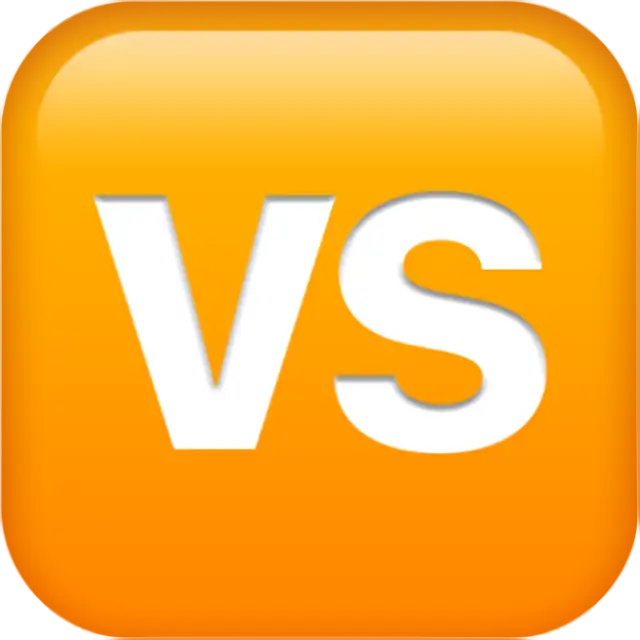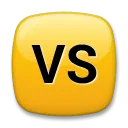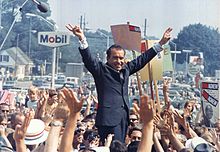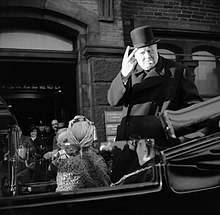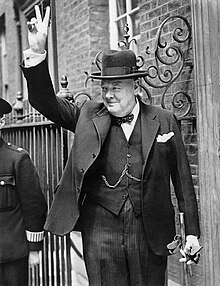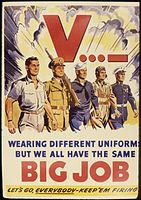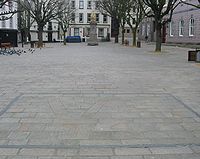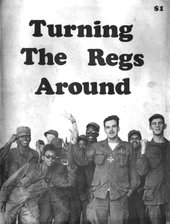В нашей стране заимствование слов из английского языка стала привычным делом. Молодые люди часто общаются на непонятном сленге – смеси русских и английских слов. Модные веяния захватили разные отрасли деятельности и сегодня, к примеру, буквенное сочетание «VS» встречается крайне часто и не всегда по делу. А тем временем многие даже не знают, как расшифровывается этот знак.
Комбинация букв обычно используется между двумя словами. Например, в ресторанном меню может быть написано «Свинина VS Рыба» или «Кофе VS чай». Интуитивно мы понимаем, что нужно выбирать между двумя блюдами, но крайне мало людей знают, откуда же взялось это буквенное сочетание и почему так часто используется в нашей разговорной и письменной речи.
Даже школьники в сочинениях и домашних работах не гнушаются употреблять такое сочетание, отлично вворачивая его в письменную речь.
Значение
Звукосочетание «VS» произошло не от английского, а от латинского слова «Versus». В переводе с древнейшего языка это слово означает «против». То есть смысл нам был понятен верно, необходимо определиться, какое из блюд выбрать, говоря о ресторанном меню.
Странно, но латынь заставляет чувствовать себя людей значимыми, звучать красиво и торжественно. Но это в разговорной речи и без всяких сокращений. В обычной жизни, такая буквенная комбинация иногда смотрится и слышится совершенно нелепо.
Использование
Сочетание «VS» используется повсеместно. Вы видите его, придя в ресторан или кафе, на телевидении у политического обозревателя, в спортивных передачах, женских журналах и даже детских мультиках.
Это расстраивает, так как буквенное сочетание часто используется неуместно. Тем более, что прочесть его на русском языке красиво не представляется возможным. А перевод звучит нелепо, ещё и в сочетании с неправильно спрягаемыми глаголами или существительными.
В целом, нет ничего страшного в использовании такой аббревиатуры, однако родной язык более богат на различные предлоги, которыми легко заменяют сочетание «VS».
- Vs
-
VS (сокр. от versus; лат. против). Допустимые написания: VS, vs, Vs, VS., vs.
Используется на письме для обозначения противопоставления кого-либо или чего-либо (спор, конкуренция) или для сравнения двух объектов, идей и пр., особенно при необходимости выбора одной из альтернатив.
Примеры:
«Геоинформационные системы: Intergraph vs. ESRI.» — название статьи, рассматривающей конкурирующие технологии.
«Бизнес-школа. Государственная VS частная. Что выбрать?» — заголовок статьи, рассматривающей разные услуги.
В англо-саксонской правовой традиции используется также при наименовании судебных дел (прецедентов), например, запись «Read v. Lyons (1947) А. С. 156» будет читаться следующим образом: «Дело по иску Рида к Лайонсу, решение Апелляционного суда опубликовано в сборнике Law Reports, в серии Арреаl cases за 1947 год, на странице 156 и следующих».[1]
Примечания
- ↑ Рене Давид. Основные правовые системы современности
См. также
- Список латинских сокращений
- i.e.
- P.S.
- vice versa
-
Ссылки
- http://dictionary.cambridge.org/define.asp?key=88069&dict=CALD
- http://www.askoxford.com/concise_oed/vs?view=uk
Wikimedia Foundation.
2010.
Полезное
Значение Эмоджи
VS — это сокращение от латинского слова versus, которое означает «против». Символ закодирован в Юникоде для совместимости с японскими наборами эмоджи для сотовых телефонов.
Символ «В квадрате vs» был утвержден как часть Юникода версии 6.0 в 2010 г. и был добавлен в Эмоджи версии 1.0 в 2015 г.
Этот текст также доступен на следующих языках:
English;
Español;
Синонимы
Против.
| Версия | 6.0 |
| Блок | Дополнение к обрамлённым буквам и цифрам |
| Тип парной зеркальной скобки (bidi) | Нет |
| Композиционное исключение | Нет |
| Изменение регистра | 1F19A |
| Простое изменение регистра | 1F19A |
| Кодировка | hex | dec (bytes) | dec | binary |
|---|---|---|---|---|
| UTF-8 | F0 9F 86 9A | 240 159 134 154 | 4036986522 | 11110000 10011111 10000110 10011010 |
| UTF-16BE | D8 3C DD 9A | 216 60 221 154 | 3627867546 | 11011000 00111100 11011101 10011010 |
| UTF-16LE | 3C D8 9A DD | 60 216 154 221 | 1020828381 | 00111100 11011000 10011010 11011101 |
| UTF-32BE | 00 01 F1 9A | 0 1 241 154 | 127386 | 00000000 00000001 11110001 10011010 |
| UTF-32LE | 9A F1 01 00 | 154 241 1 0 | 2599485696 | 10011010 11110001 00000001 00000000 |
-
Apple
-
Google
-
Facebook
-
Twitter
-
Mozilla
-
Microsoft
-
Samsung
-
LG
Похожие символы
Lao girl giving the V-sign with an outward facing palm in the sunshine
| ✌ | |
|---|---|
|
V sign |
|
| In Unicode | U+270C ✌ VICTORY HAND |
| Different from | |
| Different from | U+1F594 🖔 REVERSED VICTORY HAND |
| Related | |
| See also | U+262E ☮ PEACE SYMBOL U+01F54A 🕊 DOVE OF PEACE |
The V sign is a hand gesture in which the index and middle fingers are raised and parted to make a V shape while the other fingers are clenched. It has various meanings, depending on the circumstances and how it is presented.
When displayed with the palm inward toward the signer, it can be an offensive gesture in some Commonwealth nations (not dissimilar to showing the middle finger), dating back to at least 1900. When given with the palm outward, it is to be read as a victory sign («V for Victory»); this usage was introduced in January 1941 as part of a campaign by the Allies of World War II,[1] and made more widely known by Winston Churchill. During the Vietnam War, in the 1960s, the «V sign» with palm outward was widely adopted by the counterculture as a symbol of peace and still today in the United States it is commonly called the «peace sign». Shortly thereafter, it also became a gesture associated with fun used in photographs, especially in East Asia, where the gesture is also associated with cuteness.
Usage[edit]
US president Richard Nixon using the gesture as a victory sign (1968)
The meaning of the V sign is partially dependent on the manner in which the hand is positioned:
- If the palm of the hand is facing inward toward the signer (i.e. the back of the hand faces the observer), the sign can mean:
- An insulting gesture in Australia, New Zealand, the Republic of Ireland, South Africa, and the United Kingdom.[2][3]
- The number ‘2’ in American Sign Language.
- With the palm outward toward the observer, it can mean:
- The number ‘2’. (See Finger-counting.)
- Victory – in a setting of wartime or competition. It was first popularised in January 1941 by Victor de Laveleye, a Belgian politician in exile, who suggested it as a symbol of unity in a radio speech and the subsequent «V for Victory» campaign by the BBC.[4] It is sometimes made using both hands with upraised arms as United States President Dwight Eisenhower and, in imitation of him, Richard Nixon, used to do.
- Peace, or friend – used around the world by peace and counter-culture groups; popularized in the American peace movement of the 1960s. The commonality with the symbol’s use from the 1940s was its meaning the «end of war».[5]
- V (the letter) – used when spelling in American Sign Language.[6]
- When used with movement, it can mean:
- Air quotes – flexing fingers, palm out, one or both hands.[7]
- This hand shape is also used in a number of signs in many sign languages, including (in American Sign Language) «to look» (with the palm down) or «to see» (palm up). When the pointer and middle fingers are pointed at the signer’s eyes then turned and the pointer finger is pointed at someone it means «I am watching you.»[8]
- The ordinal «second» in American Sign Language has the V-sign palm forward, then the hand turns (yaws) until the palm faces backward.[9]
As an insult[edit]
Churchill was initially unaware of the offensive meaning of holding up his hand like in this gesture (1942).
The insulting version of the gesture (with the palm inward U+1F594 🖔 REVERSED VICTORY HAND)[10] is often compared to the offensive gesture known as «the finger». The «two-fingered salute» (also «the forks» in Australia[11]) is commonly performed by flicking the V upwards from wrist or elbow. The V sign, when the palm is facing toward the person giving the sign, has long been an insulting gesture in the United Kingdom, and later in Ireland, Australia, New Zealand and South Africa.[2] It is frequently used to signify defiance (especially to authority), contempt, or derision.[12] It was known in Canada with the meaning «Up yours!» as late as to the generation which fought in World War II, perhaps because of their familiarity with the Victory sign throughout the War years. However, subsequent generations seldom use it, and its meaning in this sense is becoming increasingly unknown in Canada.[13][14]
As an example of the V sign (palm inward) as an insult, on 1 November 1990, The Sun, a British tabloid, ran an article on its front page with the headline «Up Yours, Delors» next to a hand making a V sign protruding from a Union Jack cuff.[15][16] The article attracted complaints about alleged Francophobia, which the Press Council rejected after the newspaper stated that the paper reserved the right to use vulgar abuse in the interests of Britain.[17]
English singer-songwriter and entertainer Robbie Williams does the reversed V sign at a paparazzo photographer in London in 2000
On 3 April 2009, Scottish association football players Barry Ferguson and Allan McGregor were permanently banned from the Scotland national squad for showing the V sign while sitting on the bench during the game against Iceland. Both players were in their hotel bar drinking alcohol after the Scottish defeat to The Netherlands until around 11 am the next morning, meaning that both of the players breached the SFA discipline code before the incident as well, but the attitude shown by the V sign was considered to be so rude that the SFA decided never to include these players in the national line-up again.[18] Ferguson also lost the captaincy of Rangers as a result of the controversy.[19] McGregor’s ban was lifted by then SFA manager Craig Levein and he returned to Scotland national squad in 2010.[20]
Steve McQueen gives the sign in the closing scene of the 1971 motorsport film, Le Mans. A still picture of the gesture was recorded by photographer Nigel Snowdon and has become an icon of both McQueen and the film itself.[21][22]
For a time in the UK, «a Harvey (Smith)» became a way of describing the insulting version of the V sign, much as «the word of Cambronne» is used in France, or «the Trudeau salute» is used to describe the one-fingered salute in Canada. This happened because, in 1971, show-jumper Harvey Smith was disqualified for making a televised V sign to the judges after winning the British Show Jumping Derby at Hickstead. His win was reinstated two days later.[23] Harvey Smith pleaded that he was using a Victory sign, a defence also used by other figures in the public eye.[24]
Sometimes overseas visitors to the countries mentioned above use the «two-fingered salute» without knowing it is offensive to the natives, for example when ordering two beers in a noisy pub, or in the case of the United States president George H. W. Bush, who, while touring Australia in 1992, attempted to give a «peace sign» to a group of farmers in Canberra—who were protesting about U.S. farm subsidies—and instead gave the insulting V sign.[25]
Origins[edit]
A commonly repeated legend claims that the two-fingered salute or V sign derives from a gesture made by longbowmen fighting in the English army at the Battle of Agincourt (1415) during the Hundred Years’ War, but no written historical primary sources support this contention.[26] This origin legend states that English archers believed that those who were captured by the French had their index and middle fingers cut off so that they could no longer operate their longbows, and that the V sign was used by uncaptured and victorious archers in a display of defiance against the French. In conflict with this origin myth, the chronicler Jean de Wavrin, contemporary of the battle of Agincourt, reported that Henry V mentioned in a pre-battle speech that the French were said to be threatening to cut off three fingers (not two) from captured English bowmen.[27][28] Wielding an English longbow is best done with three fingers.[29] Neither Wavrin nor any contemporary author reported the threat was ever carried out after that nor other battles, nor did they report anything concerning a gesture of defiance.[27]
The first unambiguous evidence of the use of the insulting V sign in the United Kingdom dates to 1901, when a worker outside Parkgate ironworks in Rotherham used the gesture (captured on the film) to indicate that he did not like being filmed.[30][31]
Peter Opie interviewed children in the 1950s and observed in The Lore and Language of Schoolchildren (1959) that the much-older thumbing of the nose (cocking a snook) had been replaced by the V sign as the most common insulting gesture used in the playground.[30]
Between 1975 and 1977, a group of anthropologists including Desmond Morris studied the history and spread of European gestures and found the rude version of the V-sign to be basically unknown outside the British Isles. In his Gestures: Their Origins and Distribution, published in 1979, Morris discussed various possible origins of this sign but came to no definite conclusion:
because of the strong taboo associated with the gesture (its public use has often been heavily penalised). As a result, there is a tendency to shy away from discussing it in detail. It is «known to be dirty» and is passed on from generation to generation by people who simply accept it as a recognised obscenity without bothering to analyse it… Several of the rival claims are equally appealing. The truth is that we will probably never know…[30]
Victory sign[edit]
Second World War: V for Victory campaign[edit]
On 18 May 1939, the French daily, Le Monde Quotidien had a headline of, ‘V pour victoire’. On 14 January 1941, Victor de Laveleye, former Belgian Minister of Justice and director of the Belgian French-language broadcasts on the BBC (1940–44), suggested in a broadcast that Belgians use a V for victoire (French: «victory») and vrijheid (Dutch: «freedom») as a rallying emblem during the Second World War.
In the BBC broadcast, de Laveleye said that «the occupier, by seeing this sign, always the same, infinitely repeated, [would] understand that he is surrounded, encircled by an immense crowd of citizens eagerly awaiting his first moment of weakness, watching for his first failure.» Within weeks chalked up Vs began appearing on walls throughout Belgium, the Netherlands and Northern France.[32] Buoyed by this success, the BBC started the «V for Victory» campaign, for which they put in charge the assistant news editor Douglas Ritchie posing as «Colonel Britton». Ritchie suggested an audible V using its Morse code rhythm (three dots and a dash). As the rousing opening bars of Beethoven’s Fifth Symphony had the same rhythm, the BBC used this as its call-sign in its foreign language programmes to occupied Europe for the rest of the war. The more musically educated also understood that it was the Fate motif «knocking on the door» of Nazi Germany.
(Listen to this call-sign. (help·info)).[32][33] The BBC also encouraged the use of the V gesture introduced by de Laveleye.[34]
By July 1941, the emblematic use of the letter V had spread through occupied Europe. On 19 July, Prime Minister Winston Churchill referred approvingly to the V for Victory campaign in a speech,[35] from which point he started using the V hand sign. Early on he sometimes gestured palm in (sometimes with a cigar between the fingers).[36] Later in the war, he used palm out.[37] After aides explained to the aristocratic Churchill what the palm in gesture meant to other classes, he made sure to use the appropriate sign.[24][38] Yet the double-entendre of the gesture might have contributed to its popularity, «for a simple twist of hand would have presented the dorsal side in a mocking snub to the common enemy».[39] Other allied leaders used the sign as well.
The Germans could not remove all the signs, so they adopted the V Sign as a German symbol, sometimes adding laurel leaves under it, painting their own V’s on walls, vehicles and adding a massive V on the Eiffel Tower.
-
The V-sign (and its Morse code equivalent) incorporated on an American propaganda poster for the War Production Board, 1942 or 1943
-
A German V-sign and slogan on the Palais Bourbon in occupied Paris. The banner beneath the «V» reads «Germany is Victorious on All Fronts».
-
During the German occupation of Jersey, a stonemason repairing the paving of the Royal Square incorporated a V for victory under the noses of the occupiers. This was later amended to refer to the Red Cross ship Vega. The addition of the date 1945 and a more recent frame has transformed it into a monument.
In 1942, Aleister Crowley, a British occultist, claimed to have invented the usage of a V-sign in February 1941 as a magical foil to the Nazis’ use of the swastika. He maintained that he passed this to friends at the BBC, and to the British Naval Intelligence Division through his connections in MI5, eventually gaining the approval of Winston Churchill. Crowley noted that his 1913 publication Magick (Book 4) featured a V-sign and a swastika on the same plate.[40]
Vietnam War, victory, and peace[edit]
Protesters against the Vietnam War (and subsequent anti-war protests) and counterculture activists in the 1960s adopted the gesture as a sign of peace. Because the hippies of the day often flashed this sign (palm out) while saying «Peace», it became popularly known (through association) as «the peace sign».[41]
As a photography pose[edit]
Japan[edit]
The V sign, primarily palm-outward, is very commonly made by Japanese people, especially younger people, when posing for informal photographs, and is known as pīsu sain (ピースサイン, peace sign), or more commonly simply pīsu (ピース, peace). As the name reflects, this dates to the Vietnam War era and anti-war activists, though the precise origin is disputed. The V sign was known in Japan from the post-World War II Allied occupation of Japan, but did not acquire the use in photographs until later.
Young Japanese women giving V gesture in Ikebukuro (2010)
In Japan, it is generally believed to have been influenced by Beheiren’s anti-Vietnam War activists in the late 1960s and a Konica camera advertisement in 1971.[42][43] A more colorful account of this practice claims it was influenced by the American figure skater Janet Lynn during the 1972 Winter Olympics in Sapporo, Hokkaidō. She fell during a free-skate period, but continued to smile even as she sat on the ice. Though she placed third in the competition, her cheerful diligence and persistence resonated with many Japanese viewers. Lynn became an overnight foreign celebrity in Japan. A peace activist, Lynn frequently flashed the V sign when she was covered in Japanese media, and she is credited by some Japanese for having popularized its use since the 1970s in amateur photographs.[41]
China, South Korea and Taiwan[edit]
In China, South Korea and Taiwan, the V sign is a popular pose in photographs. It is used in both casual and formal settings. For the most part in these countries, the gesture is divorced from its previous meanings as a peace sign or as an insult; for most the meaning of the sign is «victory» or «yeah», implying a feeling of happiness. It is used in both directions (palm facing the signer and palm facing forward).
The pose is gaining significant popularity in South Korea due to the common usage amongst K-pop idols[citation needed] and young people – especially in selfies. V signing is commonly linked with aegyo, a popular trend in Korea meaning «acting cutely». It can also be placed in front of a cheek to make the cheek look slimmer, but open hand with palm against the face is more common.
Elsewhere[edit]
Iranian women during the Green uprising in 2009
In the United States, the usage of the V sign as a photography gesture is known but not widely used. The original poster for the 2003 film What a Girl Wants showed star Amanda Bynes giving a V sign as an American girl visiting London. In the US, the poster was altered to instead show Bynes with both arms down, to avoid giving the perception that the film was criticizing the then-recently commenced Iraq War.[44]
Risks[edit]
In addition to the risks due to different interpretations of the V-sign in different cultures, it has been suggested that fairly close photographs of palm-out V-signs may be a security risk, as people’s fingerprints can be clearly identified, allowing misuse. At a distance of 1.5m or less, 100% of a fingerprint can be captured, and 50% at up to 3m. Criminals could copy the fingerprint to use with door-access and payment systems. It is also possible for law enforcement to identify people this way; Carl Stewart was arrested in 2021 after police identified his fingerprints in an image he shared on EncroChat. Sufficiently detailed fingerprint information could only be harvested in «very demanding» conditions; to check that a V-sign photograph is not a security risk, it could be examined at high zoom.[45][46]
Specific uses[edit]
- In Argentina, the V sign, besides «victory», is linked to the political movement of Peronism, associated with the return of Juan Domingo Perón to Argentina from exile in 1973.[45]
- In South Africa, after the Nationalist Party won the 1948 election x fewer voters than the opposition, Vs appeared as graffiti representing the word «Volkswil» (will of the people) and thereby questioning the results.[citation needed]
- In Tamil Nadu, a state of India, it refers to the political Party AIADMK.[citation needed]
- The Kendall Motor Oil brand logo has been using the V sign since 1928 to signify becoming the first Pennsylvania refiner to offer a highly refined product good for 2,000 miles.[47][non-primary source needed]
- University of Southern California, University of Virginia, The University of Texas Rio Grande Valley, and Villanova University students, alumni, and fans «throw their Vs up» by tradition and as a sign of pride in their university and its athletic teams. The V sign in this form frequently accompanies the motto «Fight On!» at USC.[48]
- The V sign, especially when printed in green, is a sign of the Iranian Green Movement.[citation needed]
- Following the first elections in Iraq after the U.S. invasion, a photo of a woman showing the V sign with one of her fingers dipped in purple ink became very well-known and was widely circulated.[citation needed] The ink is used to identify individuals who have already voted.
- In the Philippines, would-be President Bongbong Marcos, his electoral alliance and his supporters used the «V sign» gesture as the official identity of their political campaign during the elections. The symbol prior to that was already associated with the Marcos family back when Marcos’ father used the gesture during his four presidential campaigns.
- In Poland, during the Solidarity movement, protesters showed the V sign meaning they would defeat Communism.[49] After partially free elections, when Tadeusz Mazowiecki was chosen as prime minister (24 August 1989), he went to the MPs with the V sign, which was transmitted on TV.[50] It is sometimes shown during debates about the fall of Communism.
- In Romania, the sign represents victory and has been used as an extension of the Roman salute to announce that victory has been achieved. It was used heavily during the Romanian revolution after the ousting of Nicolae Ceaușescu. Mircea Dinescu appeared in the first transmission of Romanian Television after the revolutionaries occupied it, shouting «We won!» and flashing the victory sign.[citation needed]
- During the Yugoslav Wars, Croatian and Bosnian troops and paramilitary militia used the sign as a greeting or an informal salute. U.S. and NATO peacekeepers stationed in Bosnia were forbidden from using the V-sign (victory symbol) to avoid upsetting or offending Serbs they might encounter.[51]
- In Vietnam, the V sign means «hello» since the Vietnamese word for the number «2» (hai) sounds like the English pronunciation of the greeting «hi».[citation needed]
- Ringo Starr of the Beatles uses the V sign extensively while using the phrase «Peace and Love» as a sort of catchphrase.
- A vulgar gesture signifying cunnilingus is to put the V sign with the fingers on either side of the mouth (usually with the knuckles facing the observer) and to stick the tongue out. Most of the time the tongue is wriggled around.[citation needed]
- A partially obscured V sign can be added to someone else’s head to produce devil’s horns or «bunny ears» for an amusing photo. In September 2013, Manu Tuilagi apologised to Prime Minister David Cameron after making a «bunny ears» sign behind his head in a photo taken during a visit by the British and Irish Lions squad to Downing Street.[52]
- In Indonesia, candidate of the 2014 Indonesian presidential election Joko Widodo used the sign for a political campaign. The V sign in Indonesia is called «Salam Dua Jari».[53]
- In Belgium, the New Flemish Alliance (N-VA) political party uses it as a rallying gesture. During the taking the oath of the actual Belgian federal government, three N-VA ministers used the V sign instead of the formal three-fingers sign.[54]
- In Turkey, using the Victory sign can lead to a prosecution and conviction if it is shown, because in Turkey the sign is associated with the PKK if used by Kurds.[55][56][57]
- In The Netherlands and a part of Belgium, the Dutch word for ‘peace’ is ‘vrede’. The V-sign is therefore more seen as a sign of peace, rather than as a sign for victory.[citation needed]
- On the six-month anniversary of the 2022 Russian invasion of Ukraine, a sculpture giving an inward-facing V-sign, which the BBC described as «the ‘up yours’ sign, was displayed in front of the Russian embassy in Prague.[58]
-
-
Singer Rihanna using the V sign, 2011
See also[edit]
- The finger – another insulting hand gesture where only the middle finger is raised
References[edit]
Notes
- ^ Cosgrove, Ben (4 July 2014). «V for Victory: Celebrating a Gesture of Solidarity and Defiance». Time (magazine).
- ^ a b V sign as an insult:
- UK: Staff. [1]Workforce of Parkgate Iron and Steel Co., Rotherham (1901) BFI 1901
- UK: Staff. No ban for speeding V-sign biker BBC 14 March 2008
- UK: Staff. Two fingers Prescott BBC, 22 May 2001
- IE: Staff. Shambolic Irish give two fingers to the past Irish Independent
- AU: Keim, Tony (18 November 2008). «Long tradition of flipping the bird». Courier Mail. Archived from the original on 10 September 2012. Retrieved 14 April 2011.
- AU: Karl S. Kruszelnicki. Arrow Up Yours & Plague 1 www.abc.net.au. Accessed 23 April 2008
- NZ: Glyn Harper Just the Answer Archived 19 February 2018 at the Wayback Machine Alumni Magazine [Massey University] November 2002.
- ZA: Greenaway, Mike (2 July 2022). «The day that Wales’ JPR Williams was almost lynched in Durban». IOL. Retrieved 2 July 2022.
- ^ Victor, Terry; Dalzell, Tom (December 2007). The Concise New Partridge Dictionary of Slang and Unconventional English. p. 683. ISBN 9780203962114.
- ^ «20th July 1941: ‘V for Victory’ widespread across Europe». ww2today.com.
- ^ Zelinsky, Nathaniel (18 March 2011). «From Churchill to Libya: How the V symbol went viral». Washington Post. Retrieved 14 December 2015.
- ^ Staff. American Manual Alphabet Chart Archived 3 May 2009 at the Wayback Machine Center for Disability Information & Referral (CeDIR), Indiana Institute on Disability and Community at Indiana University
- ^ Gary Martin. «Air quotes». phrases.org.uk.
- ^ ««see» American Sign Language (ASL)». lifeprint.com.
- ^ ««numbers» ASL American Sign Language». lifeprint.com.
- ^ «The Unicode Standard, Version 8.0, range 2700–27BF» (PDF). unicode.org.
- ^ Tony Keim «Long tradition of flipping the bird» Archived 10 September 2012 at the Wayback Machine, Courier Mail, 18 November 2008, accessed 14 April 2011.
- ^ Defiance, contempt or derision:
- Staff, V-sign, encyclopedia.com cites The Oxford Pocket Dictionary of Current English 2008 «Brit. a similar sign made with the first two fingers pointing up and the back of the hand facing outward, used as a gesture of abuse or contempt.» Accessed 9 May 2008.
- Staff. Hooligan grandson of legend, Daily Mirror, 20 December 2007
- Staff. V-sign led to assault on school bus teens The Press (York), 1 March 2008
- ^ «Thorn Tree – Meaning of gestures in the USA and Canada».
- ^ «Thorn Tree – Meaning of gestures in the USA and Canada».
- ^ Williams, Philip (1 November 1990). «Tabloid Sun opens campaign against European union». UPI. Retrieved 26 October 2021.
- ^ Ponsford, Dominic (4 April 2017). «Sun reprises 1990 classic front with ‘UP YOURS SENORS’ message to Spain over Gibraltar». Press Gazette. Retrieved 26 October 2021.
- ^ Wheeler, Brian (24 June 2005). «From two jags to two finger». BBC News. Retrieved 26 October 2021.
- ^ Barry Ferguson and Allan McGregor banned for life by Scotland, The Guardian, Friday 3 April 2009
- ^ «Gers strip Ferguson of captaincy». BBC News. 1 January 2007. Retrieved 27 May 2010.
- ^ «Sweden 3–0 Scotland». BBC. 11 August 2010. Retrieved 16 May 2011.
- ^ Young, Eoin (5 September 2014). «From the archives — Eoin Young’s first and last Autocar columns». Autocar.
- ^ Garratt, Sheryl (7 November 2015). «In the driving seat with Steve McQueen». The Telegraph.
- ^ Staff On this Day 15 August 1971: ‘V-sign’ costs rider victory «BBC The infamous gesture won him an entry in the Chambers dictionary which defined ‘a Harvey Smith’ as ‘a V-sign with the palm inwards, signifying derision and contempt’». Accessed 23 April 2008
- ^ a b Staff. The V sign, www.icons.org.uk. Accessed 23 April 2008
- ^ Webster Griffin Tarpley and Anton Chaitkin (2004). George Bush: The Unauthorized Biography, Progressive Press paperback edition (2004), p. 651(web link to Chapter XXV – Thyroid Storm). Tarpley & Chaitkin cite the Washington Post, 3 January 1992.
- ^ David Wilton, Word Myths: Debunking Linguistic Urban Legends, Oxford University Press, 2008, ISBN 978-0-19-537557-2.
- ^ a b «Two fingers up to English history…». The BS Historian. 2 July 2007. Retrieved 21 May 2017.
- ^ Wavrin, Jean de (1400?–1474?). A collection of the chronicles and ancient histories of Great Britain, now called England. 2. From A.D. 1399 to A.D. 1422 / by John de Wavrin, lord of Forestel; transl. by William Hardy,… and Edward L. C. P. Hardy,… London: Longman. p. 203.
- ^ «Learning to Shoot a Longbow – Tips for Beginners». archerycloud.com. 4 October 2018. Retrieved 25 July 2019.
- ^ a b c Staff. The V sign, www.icons.org.uk web.archive.org
- ^ Archived at Ghostarchive and the Wayback Machine: «Parkgate Iron and Steel Co., Rotherham (1901)». YouTube. British Film Institute. Retrieved 13 November 2016.
- ^ a b The V-campaign, Virtual Radiomuseum
- ^ Sterling, Christopher H. (December 2003). Encyclopedia of Radio. p. 359. ISBN 9780203484289.
- ^ «The V sign at BBC’s H2G2 website». Bbc.co.uk. 1 November 1990. Retrieved 31 October 2011.
- ^ «Newswatch 1940s». news.bbc.co.uk. Retrieved 27 May 2010.
- ^ «Churchill outside Downing Street». Number-10.gov.uk. Archived from the original on 2 December 2007. Retrieved 31 October 2011.
- ^ «Churchill’s famous victory sign». Number-10.gov.uk. Archived from the original on 13 June 2007. Retrieved 31 October 2011.
- ^ Staff. «The V Sign». The British Postal Museum & Archive (BPMA). Archived from the original on 6 April 2012. Retrieved 5 December 2011.
- ^ James Jerman, Anthony Weir, Images of Lust: Sexual Carvings on Medieval Churches London: Routledge, 2013, page 145.
- ^ Kaczynski, Richard. Perdurabo: The Life of Aleister Crowley. North Atlantic Books, 2010, p. 511.
- ^ a b Staff. The Japanese Version (the Sign of Peace) ICONS. A portrait of England. Accessed 1 June 2008
- ^ «雑誌に載ったわたし。». 日刊「きのこ」 skipのブログ.
- ^ 1971’s buzzwords[permanent dead link]
- ^ Ascher-Walsh, Rebecca (11 April 2003). «Sign of the Times». Entertainment Weekly. Retrieved 27 February 2014.
- ^ a b «Por qué el símbolo más famoso del peronismo podría dejar de utilizarse» [Why the most famous Peronist symbol may stop being used]. El Tribuno (in Spanish). 20 September 2019.
- ^ Yan, Alice (17 September 2019). «China’s scissor-hand selfie-takers warned of cybersecurity threat». South China Morning Post.
- ^ «135 Years of Delivering the Good Stuff» (History) – Kendall Motor Oil. Retrieved 2 August 2020
- ^ «USC «Fight On» Gesture». USC Digital Folklore Archives. 21 March 2012. Retrieved 3 April 2021.
- ^ Francisco, Ronald (2010). Collective Action Theory and Empirical Evidence (1 ed.). Springer. pp. 46. ISBN 978-1-4419-1475-0.
Subtle gestures, noise, and artwork are additional symbolic signs that dissidents use in coercive countries. Poland’s Solidarity’s signal was two fingers held up in the form of the letter V. This gesture diffused widely in Eastern Europe and now it is used in Palestine as a symbol of unity and nationalism.
- ^ «End to 45 years of Red rule». New Straits Times. 13 September 1989. Retrieved 29 January 2012.
Tadeusz Mazowlecki, who nearly fainted during his opening speech, flashed a V-for-victory sign as deputies voted his Cabinet into office by 402–0 with 13 abstentions.
- ^ «A Soldier’s Guide: Bosnia-Herzegovina». Dtic.mil. Archived from the original on 25 February 2012. Retrieved 31 October 2011.
- ^ Mairs, Gavin (17 September 2013). «Manu Tuilagi forced to apologise for playing prank on Prime Minister David Cameron in No 10 visit». Daily Telegraph. Archived from the original on 12 January 2022. Retrieved 17 September 2013.
- ^ «Slank: Salam 2 Jari, Konser Kemanusiaan Terbesar». Tempo. 7 July 2014. Retrieved 24 April 2019.
- ^ «Prestation de serment: trois N-VA font le ‘V’, signe de la victoire et de ralliement de leur parti (vidéo)». RTL Newmedia. 11 October 2014.
- ^ SCF (1 March 2017). «Lawsuit against Leyla Zana demands prison sentence up to 21 years». Stockholm Center for Freedom. Retrieved 5 January 2019.
- ^ «Turkey Condemned by ECtHR for Sentencing Işıkırık to Prison Over Victory Sign». Bianet.
- ^ Tas, Latif (22 April 2016). Legal Pluralism in Action: Dispute Resolution and the Kurdish Peace Committee. Routledge. p. 60. ISBN 9781317106159.
- ^ «Outsized hand gives ‘up yours’ to Russian embassy in Prague». BBC News. Retrieved 24 August 2022.
Bibliography
- Armstrong, Nancy; Wagner, Melissa (2003). «The ‘V’«. Field Guide to Gestures: How to Identify and Interpret Virtually Every Gesture Known to Man. Philadelphia: Quirk Books. pp. 227–30. ISBN 978-1-931686-20-4.
- Lefevre, Romana (2011). «V». Rude Hand Gestures of the World: A Guide to Offending Without Words. San Francisco: Chronicle Books. pp. 122–3. ISBN 978-0-8118-7807-4.
- Morris, Desmond with Collett, Peter; Marsh, Peter; and O’Shaughnessy, Marie (1979) Gestures: Their Origins and Distribution. London: Jonathan Cape. ISBN 0-224-01570-2; NY: Stein and Day, ISBN 0-8128-2607-8
External links[edit]
Wikimedia Commons has media related to V-sign.
- Photos of the V sign:
- Churchill Outside no. 10 Archived 9 August 2008 at the Wayback Machine
- Churchill Victory Sign
- Nixon departing office
- Paavo Väyrynen after Finnish Centre party named him foreign trade and development minister
- Need4Peace
- The V sign in the news:
- Guardian 6 June 2002: In pictures the V sign
- Sky News 18 June 2004: OAP fined £100 for V sign
- BBC 3 April 2009: Scottish footballers dropped for V sign
Lao girl giving the V-sign with an outward facing palm in the sunshine
| ✌ | |
|---|---|
|
V sign |
|
| In Unicode | U+270C ✌ VICTORY HAND |
| Different from | |
| Different from | U+1F594 🖔 REVERSED VICTORY HAND |
| Related | |
| See also | U+262E ☮ PEACE SYMBOL U+01F54A 🕊 DOVE OF PEACE |
The V sign is a hand gesture in which the index and middle fingers are raised and parted to make a V shape while the other fingers are clenched. It has various meanings, depending on the circumstances and how it is presented.
When displayed with the palm inward toward the signer, it can be an offensive gesture in some Commonwealth nations (not dissimilar to showing the middle finger), dating back to at least 1900. When given with the palm outward, it is to be read as a victory sign («V for Victory»); this usage was introduced in January 1941 as part of a campaign by the Allies of World War II,[1] and made more widely known by Winston Churchill. During the Vietnam War, in the 1960s, the «V sign» with palm outward was widely adopted by the counterculture as a symbol of peace and still today in the United States it is commonly called the «peace sign». Shortly thereafter, it also became a gesture associated with fun used in photographs, especially in East Asia, where the gesture is also associated with cuteness.
Usage[edit]
US president Richard Nixon using the gesture as a victory sign (1968)
The meaning of the V sign is partially dependent on the manner in which the hand is positioned:
- If the palm of the hand is facing inward toward the signer (i.e. the back of the hand faces the observer), the sign can mean:
- An insulting gesture in Australia, New Zealand, the Republic of Ireland, South Africa, and the United Kingdom.[2][3]
- The number ‘2’ in American Sign Language.
- With the palm outward toward the observer, it can mean:
- The number ‘2’. (See Finger-counting.)
- Victory – in a setting of wartime or competition. It was first popularised in January 1941 by Victor de Laveleye, a Belgian politician in exile, who suggested it as a symbol of unity in a radio speech and the subsequent «V for Victory» campaign by the BBC.[4] It is sometimes made using both hands with upraised arms as United States President Dwight Eisenhower and, in imitation of him, Richard Nixon, used to do.
- Peace, or friend – used around the world by peace and counter-culture groups; popularized in the American peace movement of the 1960s. The commonality with the symbol’s use from the 1940s was its meaning the «end of war».[5]
- V (the letter) – used when spelling in American Sign Language.[6]
- When used with movement, it can mean:
- Air quotes – flexing fingers, palm out, one or both hands.[7]
- This hand shape is also used in a number of signs in many sign languages, including (in American Sign Language) «to look» (with the palm down) or «to see» (palm up). When the pointer and middle fingers are pointed at the signer’s eyes then turned and the pointer finger is pointed at someone it means «I am watching you.»[8]
- The ordinal «second» in American Sign Language has the V-sign palm forward, then the hand turns (yaws) until the palm faces backward.[9]
As an insult[edit]
Churchill was initially unaware of the offensive meaning of holding up his hand like in this gesture (1942).
The insulting version of the gesture (with the palm inward U+1F594 🖔 REVERSED VICTORY HAND)[10] is often compared to the offensive gesture known as «the finger». The «two-fingered salute» (also «the forks» in Australia[11]) is commonly performed by flicking the V upwards from wrist or elbow. The V sign, when the palm is facing toward the person giving the sign, has long been an insulting gesture in the United Kingdom, and later in Ireland, Australia, New Zealand and South Africa.[2] It is frequently used to signify defiance (especially to authority), contempt, or derision.[12] It was known in Canada with the meaning «Up yours!» as late as to the generation which fought in World War II, perhaps because of their familiarity with the Victory sign throughout the War years. However, subsequent generations seldom use it, and its meaning in this sense is becoming increasingly unknown in Canada.[13][14]
As an example of the V sign (palm inward) as an insult, on 1 November 1990, The Sun, a British tabloid, ran an article on its front page with the headline «Up Yours, Delors» next to a hand making a V sign protruding from a Union Jack cuff.[15][16] The article attracted complaints about alleged Francophobia, which the Press Council rejected after the newspaper stated that the paper reserved the right to use vulgar abuse in the interests of Britain.[17]
English singer-songwriter and entertainer Robbie Williams does the reversed V sign at a paparazzo photographer in London in 2000
On 3 April 2009, Scottish association football players Barry Ferguson and Allan McGregor were permanently banned from the Scotland national squad for showing the V sign while sitting on the bench during the game against Iceland. Both players were in their hotel bar drinking alcohol after the Scottish defeat to The Netherlands until around 11 am the next morning, meaning that both of the players breached the SFA discipline code before the incident as well, but the attitude shown by the V sign was considered to be so rude that the SFA decided never to include these players in the national line-up again.[18] Ferguson also lost the captaincy of Rangers as a result of the controversy.[19] McGregor’s ban was lifted by then SFA manager Craig Levein and he returned to Scotland national squad in 2010.[20]
Steve McQueen gives the sign in the closing scene of the 1971 motorsport film, Le Mans. A still picture of the gesture was recorded by photographer Nigel Snowdon and has become an icon of both McQueen and the film itself.[21][22]
For a time in the UK, «a Harvey (Smith)» became a way of describing the insulting version of the V sign, much as «the word of Cambronne» is used in France, or «the Trudeau salute» is used to describe the one-fingered salute in Canada. This happened because, in 1971, show-jumper Harvey Smith was disqualified for making a televised V sign to the judges after winning the British Show Jumping Derby at Hickstead. His win was reinstated two days later.[23] Harvey Smith pleaded that he was using a Victory sign, a defence also used by other figures in the public eye.[24]
Sometimes overseas visitors to the countries mentioned above use the «two-fingered salute» without knowing it is offensive to the natives, for example when ordering two beers in a noisy pub, or in the case of the United States president George H. W. Bush, who, while touring Australia in 1992, attempted to give a «peace sign» to a group of farmers in Canberra—who were protesting about U.S. farm subsidies—and instead gave the insulting V sign.[25]
Origins[edit]
A commonly repeated legend claims that the two-fingered salute or V sign derives from a gesture made by longbowmen fighting in the English army at the Battle of Agincourt (1415) during the Hundred Years’ War, but no written historical primary sources support this contention.[26] This origin legend states that English archers believed that those who were captured by the French had their index and middle fingers cut off so that they could no longer operate their longbows, and that the V sign was used by uncaptured and victorious archers in a display of defiance against the French. In conflict with this origin myth, the chronicler Jean de Wavrin, contemporary of the battle of Agincourt, reported that Henry V mentioned in a pre-battle speech that the French were said to be threatening to cut off three fingers (not two) from captured English bowmen.[27][28] Wielding an English longbow is best done with three fingers.[29] Neither Wavrin nor any contemporary author reported the threat was ever carried out after that nor other battles, nor did they report anything concerning a gesture of defiance.[27]
The first unambiguous evidence of the use of the insulting V sign in the United Kingdom dates to 1901, when a worker outside Parkgate ironworks in Rotherham used the gesture (captured on the film) to indicate that he did not like being filmed.[30][31]
Peter Opie interviewed children in the 1950s and observed in The Lore and Language of Schoolchildren (1959) that the much-older thumbing of the nose (cocking a snook) had been replaced by the V sign as the most common insulting gesture used in the playground.[30]
Between 1975 and 1977, a group of anthropologists including Desmond Morris studied the history and spread of European gestures and found the rude version of the V-sign to be basically unknown outside the British Isles. In his Gestures: Their Origins and Distribution, published in 1979, Morris discussed various possible origins of this sign but came to no definite conclusion:
because of the strong taboo associated with the gesture (its public use has often been heavily penalised). As a result, there is a tendency to shy away from discussing it in detail. It is «known to be dirty» and is passed on from generation to generation by people who simply accept it as a recognised obscenity without bothering to analyse it… Several of the rival claims are equally appealing. The truth is that we will probably never know…[30]
Victory sign[edit]
Second World War: V for Victory campaign[edit]
On 18 May 1939, the French daily, Le Monde Quotidien had a headline of, ‘V pour victoire’. On 14 January 1941, Victor de Laveleye, former Belgian Minister of Justice and director of the Belgian French-language broadcasts on the BBC (1940–44), suggested in a broadcast that Belgians use a V for victoire (French: «victory») and vrijheid (Dutch: «freedom») as a rallying emblem during the Second World War.
In the BBC broadcast, de Laveleye said that «the occupier, by seeing this sign, always the same, infinitely repeated, [would] understand that he is surrounded, encircled by an immense crowd of citizens eagerly awaiting his first moment of weakness, watching for his first failure.» Within weeks chalked up Vs began appearing on walls throughout Belgium, the Netherlands and Northern France.[32] Buoyed by this success, the BBC started the «V for Victory» campaign, for which they put in charge the assistant news editor Douglas Ritchie posing as «Colonel Britton». Ritchie suggested an audible V using its Morse code rhythm (three dots and a dash). As the rousing opening bars of Beethoven’s Fifth Symphony had the same rhythm, the BBC used this as its call-sign in its foreign language programmes to occupied Europe for the rest of the war. The more musically educated also understood that it was the Fate motif «knocking on the door» of Nazi Germany.
(Listen to this call-sign. (help·info)).[32][33] The BBC also encouraged the use of the V gesture introduced by de Laveleye.[34]
By July 1941, the emblematic use of the letter V had spread through occupied Europe. On 19 July, Prime Minister Winston Churchill referred approvingly to the V for Victory campaign in a speech,[35] from which point he started using the V hand sign. Early on he sometimes gestured palm in (sometimes with a cigar between the fingers).[36] Later in the war, he used palm out.[37] After aides explained to the aristocratic Churchill what the palm in gesture meant to other classes, he made sure to use the appropriate sign.[24][38] Yet the double-entendre of the gesture might have contributed to its popularity, «for a simple twist of hand would have presented the dorsal side in a mocking snub to the common enemy».[39] Other allied leaders used the sign as well.
The Germans could not remove all the signs, so they adopted the V Sign as a German symbol, sometimes adding laurel leaves under it, painting their own V’s on walls, vehicles and adding a massive V on the Eiffel Tower.
-
The V-sign (and its Morse code equivalent) incorporated on an American propaganda poster for the War Production Board, 1942 or 1943
-
A German V-sign and slogan on the Palais Bourbon in occupied Paris. The banner beneath the «V» reads «Germany is Victorious on All Fronts».
-
During the German occupation of Jersey, a stonemason repairing the paving of the Royal Square incorporated a V for victory under the noses of the occupiers. This was later amended to refer to the Red Cross ship Vega. The addition of the date 1945 and a more recent frame has transformed it into a monument.
In 1942, Aleister Crowley, a British occultist, claimed to have invented the usage of a V-sign in February 1941 as a magical foil to the Nazis’ use of the swastika. He maintained that he passed this to friends at the BBC, and to the British Naval Intelligence Division through his connections in MI5, eventually gaining the approval of Winston Churchill. Crowley noted that his 1913 publication Magick (Book 4) featured a V-sign and a swastika on the same plate.[40]
Vietnam War, victory, and peace[edit]
Protesters against the Vietnam War (and subsequent anti-war protests) and counterculture activists in the 1960s adopted the gesture as a sign of peace. Because the hippies of the day often flashed this sign (palm out) while saying «Peace», it became popularly known (through association) as «the peace sign».[41]
As a photography pose[edit]
Japan[edit]
The V sign, primarily palm-outward, is very commonly made by Japanese people, especially younger people, when posing for informal photographs, and is known as pīsu sain (ピースサイン, peace sign), or more commonly simply pīsu (ピース, peace). As the name reflects, this dates to the Vietnam War era and anti-war activists, though the precise origin is disputed. The V sign was known in Japan from the post-World War II Allied occupation of Japan, but did not acquire the use in photographs until later.
Young Japanese women giving V gesture in Ikebukuro (2010)
In Japan, it is generally believed to have been influenced by Beheiren’s anti-Vietnam War activists in the late 1960s and a Konica camera advertisement in 1971.[42][43] A more colorful account of this practice claims it was influenced by the American figure skater Janet Lynn during the 1972 Winter Olympics in Sapporo, Hokkaidō. She fell during a free-skate period, but continued to smile even as she sat on the ice. Though she placed third in the competition, her cheerful diligence and persistence resonated with many Japanese viewers. Lynn became an overnight foreign celebrity in Japan. A peace activist, Lynn frequently flashed the V sign when she was covered in Japanese media, and she is credited by some Japanese for having popularized its use since the 1970s in amateur photographs.[41]
China, South Korea and Taiwan[edit]
In China, South Korea and Taiwan, the V sign is a popular pose in photographs. It is used in both casual and formal settings. For the most part in these countries, the gesture is divorced from its previous meanings as a peace sign or as an insult; for most the meaning of the sign is «victory» or «yeah», implying a feeling of happiness. It is used in both directions (palm facing the signer and palm facing forward).
The pose is gaining significant popularity in South Korea due to the common usage amongst K-pop idols[citation needed] and young people – especially in selfies. V signing is commonly linked with aegyo, a popular trend in Korea meaning «acting cutely». It can also be placed in front of a cheek to make the cheek look slimmer, but open hand with palm against the face is more common.
Elsewhere[edit]
Iranian women during the Green uprising in 2009
In the United States, the usage of the V sign as a photography gesture is known but not widely used. The original poster for the 2003 film What a Girl Wants showed star Amanda Bynes giving a V sign as an American girl visiting London. In the US, the poster was altered to instead show Bynes with both arms down, to avoid giving the perception that the film was criticizing the then-recently commenced Iraq War.[44]
Risks[edit]
In addition to the risks due to different interpretations of the V-sign in different cultures, it has been suggested that fairly close photographs of palm-out V-signs may be a security risk, as people’s fingerprints can be clearly identified, allowing misuse. At a distance of 1.5m or less, 100% of a fingerprint can be captured, and 50% at up to 3m. Criminals could copy the fingerprint to use with door-access and payment systems. It is also possible for law enforcement to identify people this way; Carl Stewart was arrested in 2021 after police identified his fingerprints in an image he shared on EncroChat. Sufficiently detailed fingerprint information could only be harvested in «very demanding» conditions; to check that a V-sign photograph is not a security risk, it could be examined at high zoom.[45][46]
Specific uses[edit]
- In Argentina, the V sign, besides «victory», is linked to the political movement of Peronism, associated with the return of Juan Domingo Perón to Argentina from exile in 1973.[45]
- In South Africa, after the Nationalist Party won the 1948 election x fewer voters than the opposition, Vs appeared as graffiti representing the word «Volkswil» (will of the people) and thereby questioning the results.[citation needed]
- In Tamil Nadu, a state of India, it refers to the political Party AIADMK.[citation needed]
- The Kendall Motor Oil brand logo has been using the V sign since 1928 to signify becoming the first Pennsylvania refiner to offer a highly refined product good for 2,000 miles.[47][non-primary source needed]
- University of Southern California, University of Virginia, The University of Texas Rio Grande Valley, and Villanova University students, alumni, and fans «throw their Vs up» by tradition and as a sign of pride in their university and its athletic teams. The V sign in this form frequently accompanies the motto «Fight On!» at USC.[48]
- The V sign, especially when printed in green, is a sign of the Iranian Green Movement.[citation needed]
- Following the first elections in Iraq after the U.S. invasion, a photo of a woman showing the V sign with one of her fingers dipped in purple ink became very well-known and was widely circulated.[citation needed] The ink is used to identify individuals who have already voted.
- In the Philippines, would-be President Bongbong Marcos, his electoral alliance and his supporters used the «V sign» gesture as the official identity of their political campaign during the elections. The symbol prior to that was already associated with the Marcos family back when Marcos’ father used the gesture during his four presidential campaigns.
- In Poland, during the Solidarity movement, protesters showed the V sign meaning they would defeat Communism.[49] After partially free elections, when Tadeusz Mazowiecki was chosen as prime minister (24 August 1989), he went to the MPs with the V sign, which was transmitted on TV.[50] It is sometimes shown during debates about the fall of Communism.
- In Romania, the sign represents victory and has been used as an extension of the Roman salute to announce that victory has been achieved. It was used heavily during the Romanian revolution after the ousting of Nicolae Ceaușescu. Mircea Dinescu appeared in the first transmission of Romanian Television after the revolutionaries occupied it, shouting «We won!» and flashing the victory sign.[citation needed]
- During the Yugoslav Wars, Croatian and Bosnian troops and paramilitary militia used the sign as a greeting or an informal salute. U.S. and NATO peacekeepers stationed in Bosnia were forbidden from using the V-sign (victory symbol) to avoid upsetting or offending Serbs they might encounter.[51]
- In Vietnam, the V sign means «hello» since the Vietnamese word for the number «2» (hai) sounds like the English pronunciation of the greeting «hi».[citation needed]
- Ringo Starr of the Beatles uses the V sign extensively while using the phrase «Peace and Love» as a sort of catchphrase.
- A vulgar gesture signifying cunnilingus is to put the V sign with the fingers on either side of the mouth (usually with the knuckles facing the observer) and to stick the tongue out. Most of the time the tongue is wriggled around.[citation needed]
- A partially obscured V sign can be added to someone else’s head to produce devil’s horns or «bunny ears» for an amusing photo. In September 2013, Manu Tuilagi apologised to Prime Minister David Cameron after making a «bunny ears» sign behind his head in a photo taken during a visit by the British and Irish Lions squad to Downing Street.[52]
- In Indonesia, candidate of the 2014 Indonesian presidential election Joko Widodo used the sign for a political campaign. The V sign in Indonesia is called «Salam Dua Jari».[53]
- In Belgium, the New Flemish Alliance (N-VA) political party uses it as a rallying gesture. During the taking the oath of the actual Belgian federal government, three N-VA ministers used the V sign instead of the formal three-fingers sign.[54]
- In Turkey, using the Victory sign can lead to a prosecution and conviction if it is shown, because in Turkey the sign is associated with the PKK if used by Kurds.[55][56][57]
- In The Netherlands and a part of Belgium, the Dutch word for ‘peace’ is ‘vrede’. The V-sign is therefore more seen as a sign of peace, rather than as a sign for victory.[citation needed]
- On the six-month anniversary of the 2022 Russian invasion of Ukraine, a sculpture giving an inward-facing V-sign, which the BBC described as «the ‘up yours’ sign, was displayed in front of the Russian embassy in Prague.[58]
-
-
Singer Rihanna using the V sign, 2011
See also[edit]
- The finger – another insulting hand gesture where only the middle finger is raised
References[edit]
Notes
- ^ Cosgrove, Ben (4 July 2014). «V for Victory: Celebrating a Gesture of Solidarity and Defiance». Time (magazine).
- ^ a b V sign as an insult:
- UK: Staff. [1]Workforce of Parkgate Iron and Steel Co., Rotherham (1901) BFI 1901
- UK: Staff. No ban for speeding V-sign biker BBC 14 March 2008
- UK: Staff. Two fingers Prescott BBC, 22 May 2001
- IE: Staff. Shambolic Irish give two fingers to the past Irish Independent
- AU: Keim, Tony (18 November 2008). «Long tradition of flipping the bird». Courier Mail. Archived from the original on 10 September 2012. Retrieved 14 April 2011.
- AU: Karl S. Kruszelnicki. Arrow Up Yours & Plague 1 www.abc.net.au. Accessed 23 April 2008
- NZ: Glyn Harper Just the Answer Archived 19 February 2018 at the Wayback Machine Alumni Magazine [Massey University] November 2002.
- ZA: Greenaway, Mike (2 July 2022). «The day that Wales’ JPR Williams was almost lynched in Durban». IOL. Retrieved 2 July 2022.
- ^ Victor, Terry; Dalzell, Tom (December 2007). The Concise New Partridge Dictionary of Slang and Unconventional English. p. 683. ISBN 9780203962114.
- ^ «20th July 1941: ‘V for Victory’ widespread across Europe». ww2today.com.
- ^ Zelinsky, Nathaniel (18 March 2011). «From Churchill to Libya: How the V symbol went viral». Washington Post. Retrieved 14 December 2015.
- ^ Staff. American Manual Alphabet Chart Archived 3 May 2009 at the Wayback Machine Center for Disability Information & Referral (CeDIR), Indiana Institute on Disability and Community at Indiana University
- ^ Gary Martin. «Air quotes». phrases.org.uk.
- ^ ««see» American Sign Language (ASL)». lifeprint.com.
- ^ ««numbers» ASL American Sign Language». lifeprint.com.
- ^ «The Unicode Standard, Version 8.0, range 2700–27BF» (PDF). unicode.org.
- ^ Tony Keim «Long tradition of flipping the bird» Archived 10 September 2012 at the Wayback Machine, Courier Mail, 18 November 2008, accessed 14 April 2011.
- ^ Defiance, contempt or derision:
- Staff, V-sign, encyclopedia.com cites The Oxford Pocket Dictionary of Current English 2008 «Brit. a similar sign made with the first two fingers pointing up and the back of the hand facing outward, used as a gesture of abuse or contempt.» Accessed 9 May 2008.
- Staff. Hooligan grandson of legend, Daily Mirror, 20 December 2007
- Staff. V-sign led to assault on school bus teens The Press (York), 1 March 2008
- ^ «Thorn Tree – Meaning of gestures in the USA and Canada».
- ^ «Thorn Tree – Meaning of gestures in the USA and Canada».
- ^ Williams, Philip (1 November 1990). «Tabloid Sun opens campaign against European union». UPI. Retrieved 26 October 2021.
- ^ Ponsford, Dominic (4 April 2017). «Sun reprises 1990 classic front with ‘UP YOURS SENORS’ message to Spain over Gibraltar». Press Gazette. Retrieved 26 October 2021.
- ^ Wheeler, Brian (24 June 2005). «From two jags to two finger». BBC News. Retrieved 26 October 2021.
- ^ Barry Ferguson and Allan McGregor banned for life by Scotland, The Guardian, Friday 3 April 2009
- ^ «Gers strip Ferguson of captaincy». BBC News. 1 January 2007. Retrieved 27 May 2010.
- ^ «Sweden 3–0 Scotland». BBC. 11 August 2010. Retrieved 16 May 2011.
- ^ Young, Eoin (5 September 2014). «From the archives — Eoin Young’s first and last Autocar columns». Autocar.
- ^ Garratt, Sheryl (7 November 2015). «In the driving seat with Steve McQueen». The Telegraph.
- ^ Staff On this Day 15 August 1971: ‘V-sign’ costs rider victory «BBC The infamous gesture won him an entry in the Chambers dictionary which defined ‘a Harvey Smith’ as ‘a V-sign with the palm inwards, signifying derision and contempt’». Accessed 23 April 2008
- ^ a b Staff. The V sign, www.icons.org.uk. Accessed 23 April 2008
- ^ Webster Griffin Tarpley and Anton Chaitkin (2004). George Bush: The Unauthorized Biography, Progressive Press paperback edition (2004), p. 651(web link to Chapter XXV – Thyroid Storm). Tarpley & Chaitkin cite the Washington Post, 3 January 1992.
- ^ David Wilton, Word Myths: Debunking Linguistic Urban Legends, Oxford University Press, 2008, ISBN 978-0-19-537557-2.
- ^ a b «Two fingers up to English history…». The BS Historian. 2 July 2007. Retrieved 21 May 2017.
- ^ Wavrin, Jean de (1400?–1474?). A collection of the chronicles and ancient histories of Great Britain, now called England. 2. From A.D. 1399 to A.D. 1422 / by John de Wavrin, lord of Forestel; transl. by William Hardy,… and Edward L. C. P. Hardy,… London: Longman. p. 203.
- ^ «Learning to Shoot a Longbow – Tips for Beginners». archerycloud.com. 4 October 2018. Retrieved 25 July 2019.
- ^ a b c Staff. The V sign, www.icons.org.uk web.archive.org
- ^ Archived at Ghostarchive and the Wayback Machine: «Parkgate Iron and Steel Co., Rotherham (1901)». YouTube. British Film Institute. Retrieved 13 November 2016.
- ^ a b The V-campaign, Virtual Radiomuseum
- ^ Sterling, Christopher H. (December 2003). Encyclopedia of Radio. p. 359. ISBN 9780203484289.
- ^ «The V sign at BBC’s H2G2 website». Bbc.co.uk. 1 November 1990. Retrieved 31 October 2011.
- ^ «Newswatch 1940s». news.bbc.co.uk. Retrieved 27 May 2010.
- ^ «Churchill outside Downing Street». Number-10.gov.uk. Archived from the original on 2 December 2007. Retrieved 31 October 2011.
- ^ «Churchill’s famous victory sign». Number-10.gov.uk. Archived from the original on 13 June 2007. Retrieved 31 October 2011.
- ^ Staff. «The V Sign». The British Postal Museum & Archive (BPMA). Archived from the original on 6 April 2012. Retrieved 5 December 2011.
- ^ James Jerman, Anthony Weir, Images of Lust: Sexual Carvings on Medieval Churches London: Routledge, 2013, page 145.
- ^ Kaczynski, Richard. Perdurabo: The Life of Aleister Crowley. North Atlantic Books, 2010, p. 511.
- ^ a b Staff. The Japanese Version (the Sign of Peace) ICONS. A portrait of England. Accessed 1 June 2008
- ^ «雑誌に載ったわたし。». 日刊「きのこ」 skipのブログ.
- ^ 1971’s buzzwords[permanent dead link]
- ^ Ascher-Walsh, Rebecca (11 April 2003). «Sign of the Times». Entertainment Weekly. Retrieved 27 February 2014.
- ^ a b «Por qué el símbolo más famoso del peronismo podría dejar de utilizarse» [Why the most famous Peronist symbol may stop being used]. El Tribuno (in Spanish). 20 September 2019.
- ^ Yan, Alice (17 September 2019). «China’s scissor-hand selfie-takers warned of cybersecurity threat». South China Morning Post.
- ^ «135 Years of Delivering the Good Stuff» (History) – Kendall Motor Oil. Retrieved 2 August 2020
- ^ «USC «Fight On» Gesture». USC Digital Folklore Archives. 21 March 2012. Retrieved 3 April 2021.
- ^ Francisco, Ronald (2010). Collective Action Theory and Empirical Evidence (1 ed.). Springer. pp. 46. ISBN 978-1-4419-1475-0.
Subtle gestures, noise, and artwork are additional symbolic signs that dissidents use in coercive countries. Poland’s Solidarity’s signal was two fingers held up in the form of the letter V. This gesture diffused widely in Eastern Europe and now it is used in Palestine as a symbol of unity and nationalism.
- ^ «End to 45 years of Red rule». New Straits Times. 13 September 1989. Retrieved 29 January 2012.
Tadeusz Mazowlecki, who nearly fainted during his opening speech, flashed a V-for-victory sign as deputies voted his Cabinet into office by 402–0 with 13 abstentions.
- ^ «A Soldier’s Guide: Bosnia-Herzegovina». Dtic.mil. Archived from the original on 25 February 2012. Retrieved 31 October 2011.
- ^ Mairs, Gavin (17 September 2013). «Manu Tuilagi forced to apologise for playing prank on Prime Minister David Cameron in No 10 visit». Daily Telegraph. Archived from the original on 12 January 2022. Retrieved 17 September 2013.
- ^ «Slank: Salam 2 Jari, Konser Kemanusiaan Terbesar». Tempo. 7 July 2014. Retrieved 24 April 2019.
- ^ «Prestation de serment: trois N-VA font le ‘V’, signe de la victoire et de ralliement de leur parti (vidéo)». RTL Newmedia. 11 October 2014.
- ^ SCF (1 March 2017). «Lawsuit against Leyla Zana demands prison sentence up to 21 years». Stockholm Center for Freedom. Retrieved 5 January 2019.
- ^ «Turkey Condemned by ECtHR for Sentencing Işıkırık to Prison Over Victory Sign». Bianet.
- ^ Tas, Latif (22 April 2016). Legal Pluralism in Action: Dispute Resolution and the Kurdish Peace Committee. Routledge. p. 60. ISBN 9781317106159.
- ^ «Outsized hand gives ‘up yours’ to Russian embassy in Prague». BBC News. Retrieved 24 August 2022.
Bibliography
- Armstrong, Nancy; Wagner, Melissa (2003). «The ‘V’«. Field Guide to Gestures: How to Identify and Interpret Virtually Every Gesture Known to Man. Philadelphia: Quirk Books. pp. 227–30. ISBN 978-1-931686-20-4.
- Lefevre, Romana (2011). «V». Rude Hand Gestures of the World: A Guide to Offending Without Words. San Francisco: Chronicle Books. pp. 122–3. ISBN 978-0-8118-7807-4.
- Morris, Desmond with Collett, Peter; Marsh, Peter; and O’Shaughnessy, Marie (1979) Gestures: Their Origins and Distribution. London: Jonathan Cape. ISBN 0-224-01570-2; NY: Stein and Day, ISBN 0-8128-2607-8
External links[edit]
Wikimedia Commons has media related to V-sign.
- Photos of the V sign:
- Churchill Outside no. 10 Archived 9 August 2008 at the Wayback Machine
- Churchill Victory Sign
- Nixon departing office
- Paavo Väyrynen after Finnish Centre party named him foreign trade and development minister
- Need4Peace
- The V sign in the news:
- Guardian 6 June 2002: In pictures the V sign
- Sky News 18 June 2004: OAP fined £100 for V sign
- BBC 3 April 2009: Scottish footballers dropped for V sign

Против
U+1F19A
Нажмите, чтобы скопировать и вставить символ
Emoji
-
apple
-
google
-
facebook
-
twitter
-
mozilla
-
microsoft
-
samsung
-
lg
Значение Эмоджи
VS — это сокращение от латинского слова versus, которое означает «против». Символ закодирован в Юникоде для совместимости с японскими наборами эмоджи для сотовых телефонов.
Символ «В квадрате vs» был утвержден как часть Юникода версии 6.0 в 2010 г. и был добавлен в Эмоджи версии 1.0 в 2015 г.
Этот текст также доступен на следующих языках:
English;
Español;
Свойства
| Версия | 6.0 |
| Блок | Дополнение к обрамлённым буквам и цифрам |
| Тип парной зеркальной скобки (bidi) | Нет |
| Композиционное исключение | Нет |
| Изменение регистра | 1F19A |
| Простое изменение регистра | 1F19A |
Буквенно-цифровые обозначения
-
Унифицированнй иероглиф в квадрате…
-
Унифицированнй иероглиф в квадрате…
-
Унифицированнй иероглиф в квадрате…
-
Унифицированнй иероглиф в квадрате…
-
Обведенная кругом идеограмма секрет
-
Унифицированнй иероглиф в квадрате…
-
В квадрате up с восклицательным знаком
-
Катакана в квадрате koko
-
Символы ввода
-
Унифицированнй иероглиф в квадрате…
-
В чёрном квадрате латинская заглавная…
-
В квадрате free
-
Унифицированнй иероглиф в квадрате…
-
В квадрате sos
-
В квадрате id
-
В чёрном квадрате AB
-
Символы ввода
-
В чёрном квадрате New
-
Унифицированнй иероглиф в квадрате…
-
Иероглиф в круге преимущество
-
Иероглиф в круге принимать
-
Унифицированнй иероглиф в квадрате…
-
В квадрате ng
-
В чёрном квадрате Ok
-
Источник информации
-
Унифицированнй иероглиф в квадрате…
-
Обведенная кругом идеограмма…
-
Унифицированнй иероглиф в квадрате…
-
В квадрате cl
-
Катакана в квадрате sa
-
Символы ввода
-
В чёрном квадрате латинская заглавная…
-
Символы ввода
-
В чёрном квадрате латинская заглавная…
-
В чёрном квадрате Cool
-
В чёрном квадрате латинская заглавная…
-
Латинская заглавная буква M в круге
-
Символы ввода
Кодировка
| Кодировка | hex | dec (bytes) | dec | binary |
|---|---|---|---|---|
| UTF-8 | F0 9F 86 9A | 240 159 134 154 | 4036986522 | 11110000 10011111 10000110 10011010 |
| UTF-16BE | D8 3C DD 9A | 216 60 221 154 | 3627867546 | 11011000 00111100 11011101 10011010 |
| UTF-16LE | 3C D8 9A DD | 60 216 154 221 | 1020828381 | 00111100 11011000 10011010 11011101 |
| UTF-32BE | 00 01 F1 9A | 0 1 241 154 | 127386 | 00000000 00000001 11110001 10011010 |
| UTF-32LE | 9A F1 01 00 | 154 241 1 0 | 2599485696 | 10011010 11110001 00000001 00000000 |
🆚 Значок «против»
Буквы V и S в квадрате. Аббревиатура для слова против. Используется, чтобы показать бой претендентов. Значок «против» был одобрен как часть Unicode 6.0 в 2010 году под названием «Значок «против»» и добавлен в Emoji 1.0 в 2015 году.
Скопировать 🆚 эмодзи:
🆚 Значок «против» — значение эмодзи (эмоджи)
Эмодзи Значок «против» это буквы VS в квадрате. Как все должны знать, VS используется для сокращения слова против, которое используется для обозначения сражающихся противников. Он хорошо известен и широко используется в видеоиграх, поединках по боксу, в шахматных играх, практически везде, где вы увидите кого-то, кто сражается с другим человеком или группой.
Используйте этот эмодзи со эмодзи 👊 Кулак или эмодзи 🥊 Боксерская перчатка, чтобы показать, что битва носит физический характер. После 🤼♂️ Боя используйте эмодзи 😤 В ожидании успеха, чтобы показать свою победу в тяжелом сражении.
Название в Apple
-
🆚Squared Vs
Тренды Эмодзи
Как эмодзи выглядит на Apple Iphone, Android и других платформах
| Категория | ✅ Символы |
| Подгруппа | Alphanum |
| Codepoints | 1F19A |
| Шорткод | :vs: |
Тэги и ключевые слова
Значок «против» 🆚 коды emoji для программистов:
| HTML hex | 🆚 |
| HTML dec | 🆚 |
| URL escape code | %F0%9F%86%9A |
| Punycode | xn--747h |
| Bytes (UTF-8) | F0 9F 86 9A |
| JavaScript, JSON, Java | uD83CuDD9A |
| C, C++, Python | U0001f19a |
| CSS | 1F19A |
| PHP, Ruby | u{1F19A} |
| Perl | x{1F19A} |
В нашей стране заимствование слов из английского языка стала привычным делом. Молодые люди часто общаются на непонятном сленге – смеси русских и английских слов. Модные веяния захватили разные отрасли деятельности и сегодня, к примеру, буквенное сочетание «VS» встречается крайне часто и не всегда по делу. А тем временем многие даже не знают, как расшифровывается этот знак.
Комбинация букв обычно используется между двумя словами. Например, в ресторанном меню может быть написано «Свинина VS Рыба» или «Кофе VS чай». Интуитивно мы понимаем, что нужно выбирать между двумя блюдами, но крайне мало людей знают, откуда же взялось это буквенное сочетание и почему так часто используется в нашей разговорной и письменной речи.
Даже школьники в сочинениях и домашних работах не гнушаются употреблять такое сочетание, отлично вворачивая его в письменную речь.
Значение
Звукосочетание «VS» произошло не от английского, а от латинского слова «Versus». В переводе с древнейшего языка это слово означает «против». То есть смысл нам был понятен верно, необходимо определиться, какое из блюд выбрать, говоря о ресторанном меню.
Странно, но латынь заставляет чувствовать себя людей значимыми, звучать красиво и торжественно. Но это в разговорной речи и без всяких сокращений. В обычной жизни, такая буквенная комбинация иногда смотрится и слышится совершенно нелепо.
Использование
Сочетание «VS» используется повсеместно. Вы видите его, придя в ресторан или кафе, на телевидении у политического обозревателя, в спортивных передачах, женских журналах и даже детских мультиках.
Это расстраивает, так как буквенное сочетание часто используется неуместно. Тем более, что прочесть его на русском языке красиво не представляется возможным. А перевод звучит нелепо, ещё и в сочетании с неправильно спрягаемыми глаголами или существительными.
В целом, нет ничего страшного в использовании такой аббревиатуры, однако родной язык более богат на различные предлоги, которыми легко заменяют сочетание «VS».
Определение и разбор слова
Данное слово является наречием и может употребляться в нескольких значениях:
- Прямо перед кем-либо на противоположной стороне;
- Иначе, противореча.
Варианты написания слова
При использовании этого слова в письме может возникнуть вопрос: «Какой вариант написания слова является правильным?»
Существует два основных варианта написания слова:
- «напротив»;
- «на против».
Как правильно пишется: «напротив» или «на против»?
С точки зрения правил русской орфографии верным является следующее написание слова:
«НАПРОТИВ»
Какое правило применяется?
Для того, чтобы разобраться в правописании данного слова, сделаем его морфемный разбор:
- «на» — приставка;
- «против» — корень.
В русском языке есть правило: «Наречия, образованные от других наречий приставочным способом, пишутся слитно». Слово «напротив» образовано от наречия «против» при помощи приставки «на-», руководствуясь вышеназванным правилом, пишем данное слово слитно.
Подводим итоги
- Верное написание: «напротив»
- Неверное написание: «на против»
В русском языке достаточно много однозвучных слов, слитное или раздельное написание которых вызывает трудности. Посмотрим, что правильно из двух лексических единиц: «напротив» или «на против». Чтобы разобраться в этом вопросе, нужно обратиться к правилам грамматики русского языка.
Как пишется правильно: «напротив» или «на против»?
Для определения части речи целесообразно построить предложение с этим словом:
- Наша команда выстроилась в центре футбольного поля, соперник – напротив.
Интересующее нас слово отвечает на обстоятельственный вопрос: выстроилась где?
Следовательно, «напротив» в данном примере является наречием. Но оно может быть использовано в качестве предлога в сочетании с существительным или местоимением в родительном падеже.
- Коммерческий банк располагался напротив огромного торгового центра.
- Напротив нас сидел худощавый паренек лет 15.
Правописание слова
Характер написания слова во многом определяется той ролью, которую играет начальное буквосочетание «на». Оно нам больше известно как предлог. Но эта служебная часть речи пишется раздельно.
Вывод: слово «напротив» образовано от другого наречия «против» при помощи приставки «на-» и пишется всегда слитно.
Примеров образования наречий с приставками, похожими на предлоги, в русском языке немало:
- Нельзя – донельзя; куда – откуда; всегда – навсегда; даром – задаром.
Примеры предложений
- Вскоре прямо напротив нашего дома выросла огромная многоэтажка.
- Напротив, в грязной канаве барахталась местная ребятня.
- На нижней полке плацкартного вагона расположился я, а напротив меня оказался тот самый старик.
- В гостинице напротив нашего номера поселили туристов из солнечного Узбекистана.
В каких случаях «напротив» выделяется запятыми
Выделение «напротив» запятыми происходит только тогда, когда оно находится в роли вводной части предложения. Слово может занимать три позиции, от которых зависит место положения знака препинания:
- если вводное слово впереди, запятая ставится после него;
- в середине предложения оно обособляется с двух сторон;
- если слово замыкает предложение, запятая ставится впереди.
Примеры
- Напротив, командир был весел, как ни в чем не бывало.
- Вопреки нашим ожиданиям, они, напротив, повели себя очень странно.
- Настроение захворавшего мальчика не улучшилось, а стало хуже, напротив.
Ошибочное написание слова «напротив»
В русском языке достаточно много слов, которые в зависимости от лексического и грамматического значения, могут быть написаны как слитно, так и раздельно.
Например: на встречу – навстречу; на зло – назло; в начале − вначале.
К слову «напротив» это не относится. Оно имеет только слитное написание, и любые иные формы ошибочны.
Синонимы слова «напротив»
Слово имеет немало синонимов. Одни из них используются в речи и на письме нечасто. К числу наиболее популярных синонимов слова можно отнести следующие:
- наоборот;
- против;
- поперек;
- наперекор;
- иначе;
- в противоположность;
- намеренно;
- назло;
- в противовес;
- вернее.
Все эти лексические единицы не могут служить полноценной заменой для слова «напротив», но имеют схожие с ним значения.
Заключение
Чтобы не ошибиться в правописании слова «напротив», необходимо помнить о том, что:
- оно является наречием, а эта часть речи пишется одним словом;
- буквосочетание «на» в начале лексической единицы представляет собой приставку, и она всегда пишется только слитно;
- «на» не является предлогом и не может быть написано раздельно.
Важно также помнить о случаях постановки запятых, когда слово «напротив» выступает в предложении в качестве вводного слова.
Лучший ответ
Aquila non captat muscas
Высший разум
(110272)
15 лет назад
Можешь заменить: тире — кавычки — тире ( — » — )
олеся зайцева
Профи
(779)
15 лет назад
нет на клавиатуре ( тире, две палочки вертикальных, тире)
-=NUke=-
Гуру
(2838)
15 лет назад
——II ——че-то типа этого
SKIT
Мастер
(1843)
15 лет назад
вот: — / —
Геннадий
Просветленный
(35656)
15 лет назад
Знак повтора в музыкальной нотной грамоте пишется так:
СИБПРОМЭНЕРГО 597773
Знаток
(381)
5 лет назад
Тире-Кавычки-Тире
Борис Шевелюхин
Профи
(502)
3 года назад
-//-
k 1
Ученик
(134)
2 месяца назад
—//—
не против или непротив
Слитно или раздельно?
Слово «не против» пишется раздельно во всех возможных контекстах, какой бы частью речи оно ни являлось – не против.
Варианта слитного написания данного слова не существует.
Правило
Слово «против» может изменять свои синтаксические функции. В различных контекстах оно может использоваться в качестве предлога в сочетании с существительными или местоимениями в родительном падеже, либо предикатива (то есть функционального сказуемого в безличном предложении).
Чтобы узнать, как правильно пишется слово «не против», нет необходимости уточнять, какой частью речи и каким членом предложения оно является. Достаточно запомнить, что в любом случае частица «не» со словом «против» будет писаться раздельно. Также не стоит смешивать данное слово с производным предлогом «напротив», который пишется слитно.
Примеры
- Я была бы не против пойти вечером в клуб немного развеяться.
- – Ты не против, если мы на несколько дней приедем к вам в январе?- Нет, я не против.
- Мухтар был отнюдь не против сахарной косточки, предложенной ему незнакомцем.
- Да я не против детективных романов, просто мне кажется, он мог бы иногда почитать и что-нибудь более глубокое и значительное!
- Я был не против отправится на шашлыки прямо сейчас, но придется ждать до субботы.

Правила русского языка достаточно сложны в освоении, ведь многие из них предполагают разные условия написания, а также исключения из правил. Поэтому чтобы грамотно писать, нужно четко знать и понимать, как действуют правила русского языка на письме. Сегодня мы поговорим о том, как пишется мягкий знак в разных словах.
Правописание мягкого знака
- Когда пишется разделительный мягкий знак? Здесь все просто: разделительный мягкий знак пишется после согласных и перед гласными е, и, ю, я внутри слов (но не после приставок). Примеры: семья, вьюга, карьера, бурьян.
- Мягкий знак пишется на конце слов после парных согласных для обозначения мягкости: прорубь, изморозь, тетрадь.
- Мягкий знак пишется после буквы «о» в некоторых словах иностранного происхождения. Примеры: почтальон, бульон.
- В сложных числительных, образованных от простых, в которых имеется мягкий знак, также пишется эта буква. Например: пять — пятьдесят; девять — девятьсот. Но исключением являются подобные числительные: семнадцать, шестнадцать и т. д. В середине этих числительных не пишется мягкий знак.
- Мягкий знак пишется в глаголах в повелительном наклонении перед -те и -ся (отправиться — отправься, отправьте) и в неопределенных формах перед -ся (вернуться, подстричься, уменьшиться).
- Часто мягкий знак пишется для обозначения мягкости на конце слов после твердой согласной (темень, варить) и в середине слова (косьба, меньше).
- Мягкий знак употребляется в форме множественного числа творительного падежа: четырьмя, детьми.
- Если согласная стоит перед другой мягкой согласной, то между ними ставится мягкий знак в двух случаях. Первый: если после изменения слова вторая мягкая согласная становится твердой, а первая остается мягкой (свадьбе — свадьба). Второй: для того чтобы обозначить мягкость «л»: льнет, мальчик, сельдь.
- Мягкий знак пишется в середине сложносокращенного слова, если его первая часть оканчивается на ь: утильсырье, сельсовет.
Мягкий знак после шипящих
Мягкий знак чаще не употребляется в словах после шипящих ж, ч, ш и щ. Но есть несколько случаев-исключений. Где пишется мягкий знак после шипящих?
- В окончаниях глаголов после «ш» в форе 2-го лица ед. ч. будущего и настоящего времен: рисуешь — рисуешься, играешь — играешься.
- На конце существительных женского рода в именительном и винительном падежах: мышь, дочь, рожь.
- На конце глаголов повелит. наклонения в ед. числе: поешь, мажь — мажься.
- Также в повелительном наклонении в глаголах пишется мягкий знак перед -тесь и -те: мажьтесь, поешьте.
- Мягкий знак пишется в неопределенной форме глагола: стеречь, беречься.
- Мягкий знак используется во всех наречиях, которые оканчиваются на ш и ч, а также на концах частиц: прочь, сплошь, напрочь, лишь, бишь. Мягкий знак не пишется после шипящей ж в следующих словах- исключениях: невтерпеж, уж, замуж.
Где не пишется мягкий знак
- В глаголах в форме 3 лица ед. числа (что делает?): готовит, рисует, пишет.
- В существительных в форме род. падежа множ. числа после -ен: черешен. Исключения: барышень, деревень, боярышень.
- В существительных множ. числа род. падежа с основой на шипящий: зрелищ, стрельбищ, рощ.
- На конце существительных мужского рода: мяч, врач, нож.
- На конце кратких прилагательных: хорош, горяч.
- Между двумя мягкими л: иллюминация.
- В сочетаниях чн, чк, рч, нч,нщ, рщ: ярче, фонарщик, нянчить.
- В других сочетаниях между двумя согласными (кроме тех, что в прошлом пункте): гроздь, трость.
Вот такая непростая буква — мягкий знак. Когда пишется он в разных словах, Вы теперь знаете. На первый взгляд, очень непросто запомнить это правило с многочисленными пунктами, однако стоит его только усвоить на примерах, как по аналогии Вы уже будете писать похожие слова правильно, точно зная, ставить в них мягкий знак или нет.
🆚 Значок «против»
Буквы V и S в квадрате. Аббревиатура для слова против. Используется, чтобы показать бой претендентов. Значок «против» был одобрен как часть Unicode 6.0 в 2010 году под названием «Значок «против»» и добавлен в Emoji 1.0 в 2015 году.
Скопировать 🆚 эмодзи:
🆚 Значок «против» — значение эмодзи (эмоджи)
Эмодзи Значок «против» это буквы VS в квадрате. Как все должны знать, VS используется для сокращения слова против, которое используется для обозначения сражающихся противников. Он хорошо известен и широко используется в видеоиграх, поединках по боксу, в шахматных играх, практически везде, где вы увидите кого-то, кто сражается с другим человеком или группой.
Используйте этот эмодзи со эмодзи 👊 Кулак или эмодзи 🥊 Боксерская перчатка, чтобы показать, что битва носит физический характер. После 🤼♂️ Боя используйте эмодзи 😤 В ожидании успеха, чтобы показать свою победу в тяжелом сражении.
Название в Apple
-
🆚Squared Vs
Тренды Эмодзи
Как эмодзи выглядит на Apple Iphone, Android и других платформах
| Категория | ✅ Символы |
| Подгруппа | Alphanum |
| Codepoints | 1F19A |
| Шорткод | :vs: |
Тэги и ключевые слова
Значок «против» 🆚 коды emoji для программистов:
| HTML hex | 🆚 |
| HTML dec | 🆚 |
| URL escape code | %F0%9F%86%9A |
| Punycode | xn--747h |
| Bytes (UTF-8) | F0 9F 86 9A |
| JavaScript, JSON, Java | uD83CuDD9A |
| C, C++, Python | U0001f19a |
| CSS | 1F19A |
| PHP, Ruby | u{1F19A} |
| Perl | x{1F19A} |
Определение и разбор слова
Данное слово является наречием и может употребляться в нескольких значениях:
- Прямо перед кем-либо на противоположной стороне;
- Иначе, противореча.
Варианты написания слова
При использовании этого слова в письме может возникнуть вопрос: «Какой вариант написания слова является правильным?»
Существует два основных варианта написания слова:
- «напротив»;
- «на против».
Как правильно пишется: «напротив» или «на против»?
С точки зрения правил русской орфографии верным является следующее написание слова:
«НАПРОТИВ»
Какое правило применяется?
Для того, чтобы разобраться в правописании данного слова, сделаем его морфемный разбор:
- «на» — приставка;
- «против» — корень.
В русском языке есть правило: «Наречия, образованные от других наречий приставочным способом, пишутся слитно». Слово «напротив» образовано от наречия «против» при помощи приставки «на-», руководствуясь вышеназванным правилом, пишем данное слово слитно.
Подводим итоги
- Верное написание: «напротив»
- Неверное написание: «на против»
В русском языке достаточно много однозвучных слов, слитное или раздельное написание которых вызывает трудности. Посмотрим, что правильно из двух лексических единиц: «напротив» или «на против». Чтобы разобраться в этом вопросе, нужно обратиться к правилам грамматики русского языка.
Как пишется правильно: «напротив» или «на против»?
Для определения части речи целесообразно построить предложение с этим словом:
- Наша команда выстроилась в центре футбольного поля, соперник – напротив.
Интересующее нас слово отвечает на обстоятельственный вопрос: выстроилась где?
Следовательно, «напротив» в данном примере является наречием. Но оно может быть использовано в качестве предлога в сочетании с существительным или местоимением в родительном падеже.
- Коммерческий банк располагался напротив огромного торгового центра.
- Напротив нас сидел худощавый паренек лет 15.
Правописание слова
Характер написания слова во многом определяется той ролью, которую играет начальное буквосочетание «на». Оно нам больше известно как предлог. Но эта служебная часть речи пишется раздельно.
Вывод: слово «напротив» образовано от другого наречия «против» при помощи приставки «на-» и пишется всегда слитно.
Примеров образования наречий с приставками, похожими на предлоги, в русском языке немало:
- Нельзя – донельзя; куда – откуда; всегда – навсегда; даром – задаром.
Примеры предложений
- Вскоре прямо напротив нашего дома выросла огромная многоэтажка.
- Напротив, в грязной канаве барахталась местная ребятня.
- На нижней полке плацкартного вагона расположился я, а напротив меня оказался тот самый старик.
- В гостинице напротив нашего номера поселили туристов из солнечного Узбекистана.
В каких случаях «напротив» выделяется запятыми
Выделение «напротив» запятыми происходит только тогда, когда оно находится в роли вводной части предложения. Слово может занимать три позиции, от которых зависит место положения знака препинания:
- если вводное слово впереди, запятая ставится после него;
- в середине предложения оно обособляется с двух сторон;
- если слово замыкает предложение, запятая ставится впереди.
Примеры
- Напротив, командир был весел, как ни в чем не бывало.
- Вопреки нашим ожиданиям, они, напротив, повели себя очень странно.
- Настроение захворавшего мальчика не улучшилось, а стало хуже, напротив.
Ошибочное написание слова «напротив»
В русском языке достаточно много слов, которые в зависимости от лексического и грамматического значения, могут быть написаны как слитно, так и раздельно.
Например: на встречу – навстречу; на зло – назло; в начале − вначале.
К слову «напротив» это не относится. Оно имеет только слитное написание, и любые иные формы ошибочны.
Синонимы слова «напротив»
Слово имеет немало синонимов. Одни из них используются в речи и на письме нечасто. К числу наиболее популярных синонимов слова можно отнести следующие:
- наоборот;
- против;
- поперек;
- наперекор;
- иначе;
- в противоположность;
- намеренно;
- назло;
- в противовес;
- вернее.
Все эти лексические единицы не могут служить полноценной заменой для слова «напротив», но имеют схожие с ним значения.
Заключение
Чтобы не ошибиться в правописании слова «напротив», необходимо помнить о том, что:
- оно является наречием, а эта часть речи пишется одним словом;
- буквосочетание «на» в начале лексической единицы представляет собой приставку, и она всегда пишется только слитно;
- «на» не является предлогом и не может быть написано раздельно.
Важно также помнить о случаях постановки запятых, когда слово «напротив» выступает в предложении в качестве вводного слова.
Лучший ответ
Aquila non captat muscas
Высший разум
(110272)
15 лет назад
Можешь заменить: тире — кавычки — тире ( — » — )
олеся зайцева
Профи
(779)
15 лет назад
нет на клавиатуре ( тире, две палочки вертикальных, тире)
-=NUke=-
Гуру
(2838)
15 лет назад
——II ——че-то типа этого
SKIT
Мастер
(1843)
15 лет назад
вот: — / —
Геннадий
Просветленный
(35656)
15 лет назад
Знак повтора в музыкальной нотной грамоте пишется так:
СИБПРОМЭНЕРГО 597773
Знаток
(381)
5 лет назад
Тире-Кавычки-Тире
Борис Шевелюхин
Профи
(502)
3 года назад
-//-
k 1
Ученик
(134)
2 месяца назад
—//—
не против или непротив
Слитно или раздельно?
Слово «не против» пишется раздельно во всех возможных контекстах, какой бы частью речи оно ни являлось – не против.
Варианта слитного написания данного слова не существует.
Правило
Слово «против» может изменять свои синтаксические функции. В различных контекстах оно может использоваться в качестве предлога в сочетании с существительными или местоимениями в родительном падеже, либо предикатива (то есть функционального сказуемого в безличном предложении).
Чтобы узнать, как правильно пишется слово «не против», нет необходимости уточнять, какой частью речи и каким членом предложения оно является. Достаточно запомнить, что в любом случае частица «не» со словом «против» будет писаться раздельно. Также не стоит смешивать данное слово с производным предлогом «напротив», который пишется слитно.
Примеры
- Я была бы не против пойти вечером в клуб немного развеяться.
- – Ты не против, если мы на несколько дней приедем к вам в январе?- Нет, я не против.
- Мухтар был отнюдь не против сахарной косточки, предложенной ему незнакомцем.
- Да я не против детективных романов, просто мне кажется, он мог бы иногда почитать и что-нибудь более глубокое и значительное!
- Я был не против отправится на шашлыки прямо сейчас, но придется ждать до субботы.

Правила русского языка достаточно сложны в освоении, ведь многие из них предполагают разные условия написания, а также исключения из правил. Поэтому чтобы грамотно писать, нужно четко знать и понимать, как действуют правила русского языка на письме. Сегодня мы поговорим о том, как пишется мягкий знак в разных словах.
Правописание мягкого знака
- Когда пишется разделительный мягкий знак? Здесь все просто: разделительный мягкий знак пишется после согласных и перед гласными е, и, ю, я внутри слов (но не после приставок). Примеры: семья, вьюга, карьера, бурьян.
- Мягкий знак пишется на конце слов после парных согласных для обозначения мягкости: прорубь, изморозь, тетрадь.
- Мягкий знак пишется после буквы «о» в некоторых словах иностранного происхождения. Примеры: почтальон, бульон.
- В сложных числительных, образованных от простых, в которых имеется мягкий знак, также пишется эта буква. Например: пять — пятьдесят; девять — девятьсот. Но исключением являются подобные числительные: семнадцать, шестнадцать и т. д. В середине этих числительных не пишется мягкий знак.
- Мягкий знак пишется в глаголах в повелительном наклонении перед -те и -ся (отправиться — отправься, отправьте) и в неопределенных формах перед -ся (вернуться, подстричься, уменьшиться).
- Часто мягкий знак пишется для обозначения мягкости на конце слов после твердой согласной (темень, варить) и в середине слова (косьба, меньше).
- Мягкий знак употребляется в форме множественного числа творительного падежа: четырьмя, детьми.
- Если согласная стоит перед другой мягкой согласной, то между ними ставится мягкий знак в двух случаях. Первый: если после изменения слова вторая мягкая согласная становится твердой, а первая остается мягкой (свадьбе — свадьба). Второй: для того чтобы обозначить мягкость «л»: льнет, мальчик, сельдь.
- Мягкий знак пишется в середине сложносокращенного слова, если его первая часть оканчивается на ь: утильсырье, сельсовет.
Мягкий знак после шипящих
Мягкий знак чаще не употребляется в словах после шипящих ж, ч, ш и щ. Но есть несколько случаев-исключений. Где пишется мягкий знак после шипящих?
- В окончаниях глаголов после «ш» в форе 2-го лица ед. ч. будущего и настоящего времен: рисуешь — рисуешься, играешь — играешься.
- На конце существительных женского рода в именительном и винительном падежах: мышь, дочь, рожь.
- На конце глаголов повелит. наклонения в ед. числе: поешь, мажь — мажься.
- Также в повелительном наклонении в глаголах пишется мягкий знак перед -тесь и -те: мажьтесь, поешьте.
- Мягкий знак пишется в неопределенной форме глагола: стеречь, беречься.
- Мягкий знак используется во всех наречиях, которые оканчиваются на ш и ч, а также на концах частиц: прочь, сплошь, напрочь, лишь, бишь. Мягкий знак не пишется после шипящей ж в следующих словах- исключениях: невтерпеж, уж, замуж.
Где не пишется мягкий знак
- В глаголах в форме 3 лица ед. числа (что делает?): готовит, рисует, пишет.
- В существительных в форме род. падежа множ. числа после -ен: черешен. Исключения: барышень, деревень, боярышень.
- В существительных множ. числа род. падежа с основой на шипящий: зрелищ, стрельбищ, рощ.
- На конце существительных мужского рода: мяч, врач, нож.
- На конце кратких прилагательных: хорош, горяч.
- Между двумя мягкими л: иллюминация.
- В сочетаниях чн, чк, рч, нч,нщ, рщ: ярче, фонарщик, нянчить.
- В других сочетаниях между двумя согласными (кроме тех, что в прошлом пункте): гроздь, трость.
Вот такая непростая буква — мягкий знак. Когда пишется он в разных словах, Вы теперь знаете. На первый взгляд, очень непросто запомнить это правило с многочисленными пунктами, однако стоит его только усвоить на примерах, как по аналогии Вы уже будете писать похожие слова правильно, точно зная, ставить в них мягкий знак или нет.


